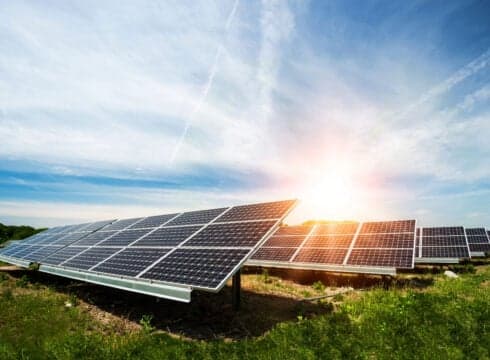One of the most significant trends in solar technology is the relentless pursuit of higher efficiency
Solar trackers are becoming increasingly prevalent in large-scale solar installations
Floating solar farms, where solar panels are installed on bodies of water such as lakes and reservoirs, are also gaining momentum
Inc42 Daily Brief
Stay Ahead With Daily News & Analysis on India’s Tech & Startup Economy
As the world grapples with the pressing need to transition to cleaner and more sustainable energy sources, solar power has emerged as a frontrunner in the race toward a greener future.
Solar energy technology continues to evolve and improve, driven by advancements in materials, manufacturing processes, and innovative approaches.
In this article, we’ll explore the exciting emerging trends in sustainable solar energy technology that are shaping the future of energy production.
High-Efficiency Solar Panels
One of the most significant trends in solar technology is the relentless pursuit of higher efficiency. Conventional silicon solar panels have made remarkable progress, but researchers are now focusing on next-generation technologies.
Tandem solar cells, which combine different materials to capture a broader spectrum of sunlight, and perovskite solar cells, known for their efficiency potential, are at the forefront of this innovation. These technologies promise to maximize electricity generation while reducing the cost per watt.
Bifacial Solar Panels
Bifacial solar panels represent a breakthrough in solar panel design. Unlike traditional panels that capture sunlight from one side, bifacial panels can harvest energy from both the front and rear sides. This dual-sided exposure increases energy production, making them a popular choice for utility-scale solar installations.
Flexible And Lightweight Solar Panels
The demand for solar panels that can be integrated into various applications is driving the development of flexible and lightweight solar panels. These panels can be used on curved surfaces, integrated into building materials, and even made transparent. As a result, the potential applications for solar power expand, from vehicle-integrated solar panels to solar-integrated clothing.
Energy Storage Solutions
Solar energy’s intermittent nature requires efficient energy storage solutions to ensure a consistent power supply. Lithium-ion batteries have dominated the energy storage market, but emerging technologies like solid-state batteries and flow batteries offer higher energy density, longer lifespans, and improved safety. These innovations are vital for storing excess solar energy for nighttime and cloudy days.
Solar Tracking Systems
Solar trackers are becoming increasingly prevalent in large-scale solar installations. These systems adjust the angle and orientation of solar panels to follow the sun’s path throughout the day, ensuring maximum exposure to sunlight. Single-axis and dual-axis trackers are enhancing energy yields and increasing the efficiency of solar farms.
IoT And Smart Solar
The integration of the Internet of Things (IoT) and smart technology is transforming solar energy systems. Solar installations can now be remotely monitored, allowing for real-time adjustments based on weather conditions and predictive maintenance. Smart solar solutions increase energy efficiency and reduce operational costs.
Advanced Inverters
Inverters are crucial for converting the direct current (DC) electricity generated by solar panels into usable alternating current (AC) electricity. Advanced inverters are being developed to improve efficiency, power quality, and grid integration. These innovations contribute to the stability and reliability of solar power systems.
Solar-Integrated EV Charging
The synergy between solar power and electric vehicles (EVs) is strengthening. Solar panels integrated with EV charging stations enable vehicle owners to charge their cars with clean energy, reducing carbon emissions and lowering the overall environmental impact of transportation.
Floating Solar Farms
Floating solar farms, where solar panels are installed on bodies of water such as lakes and reservoirs, are gaining momentum. These installations conserve land space and benefit from the cooling effect of water, which can enhance solar panel efficiency. This trend is particularly significant for regions with limited available land.
Solar Power For Hydrogen Production
Solar energy is increasingly used for electrolysis, a process that splits water into hydrogen and oxygen. The generated hydrogen can be stored and utilised for a wide range of applications, including fuel cells, making it a versatile and clean energy carrier.
In Conclusion
The future of sustainable solar energy technology is bright, with emerging trends offering innovative solutions to meet the world’s growing energy needs while reducing our carbon footprint.
High-efficiency solar panels, flexible designs, energy storage solutions, smart technology, and numerous other advancements are paving the way for a cleaner and more sustainable energy future.
As these trends continue to evolve, they hold the promise of transforming the energy landscape and contributing to a greener and more sustainable world.
{{#name}}{{name}}{{/name}}{{^name}}-{{/name}}
{{#description}}{{description}}...{{/description}}{{^description}}-{{/description}}
Note: We at Inc42 take our ethics very seriously. More information about it can be found here.


